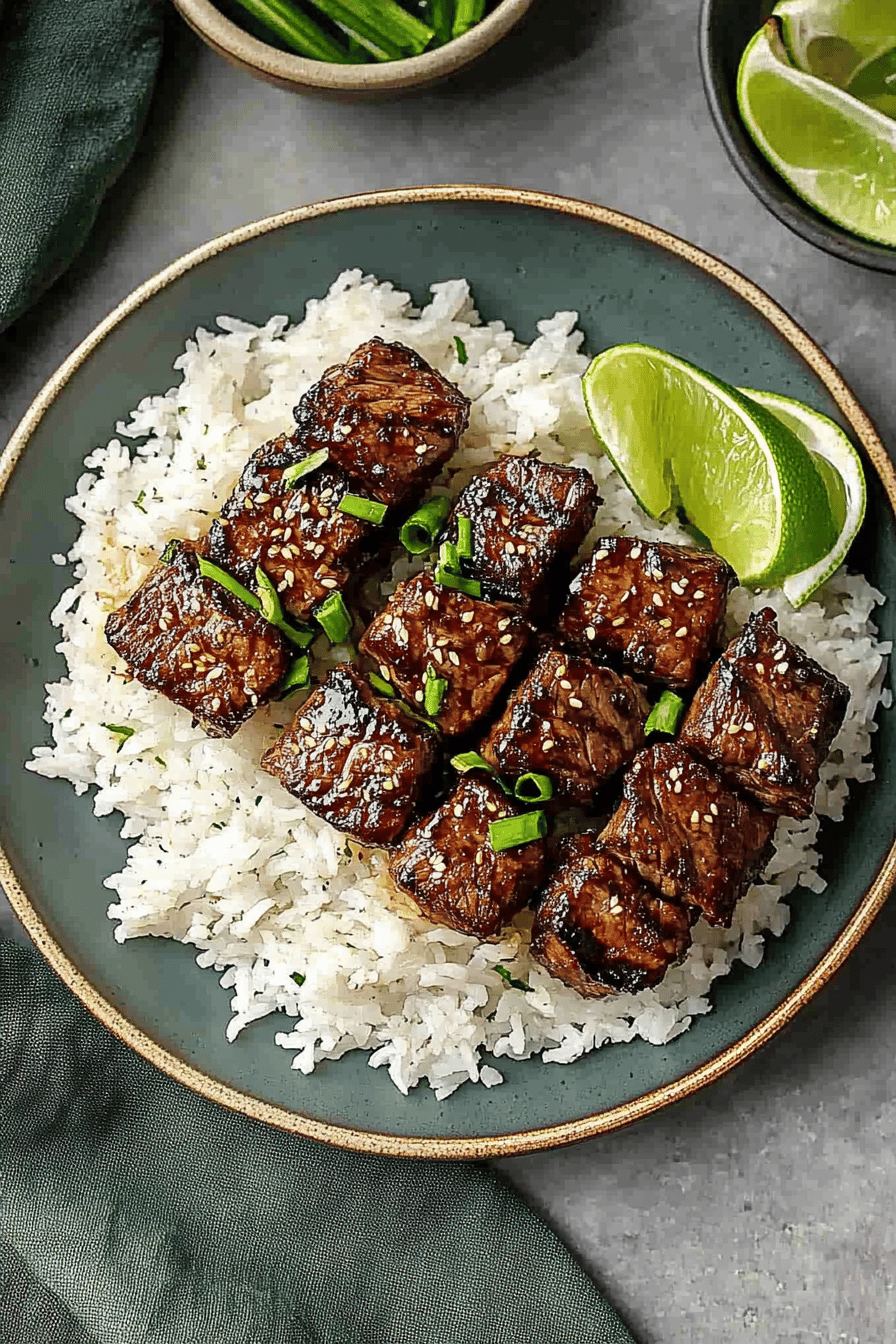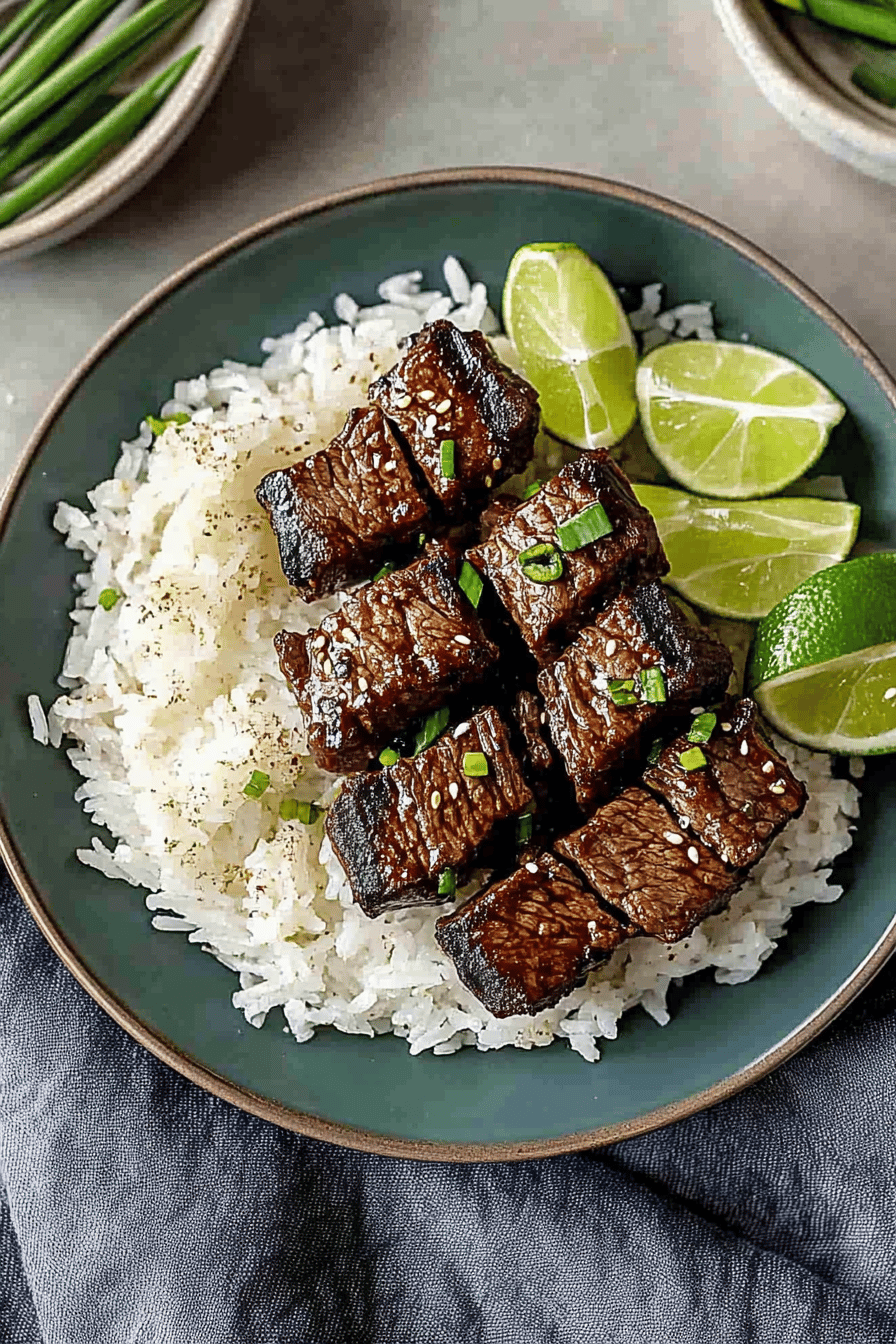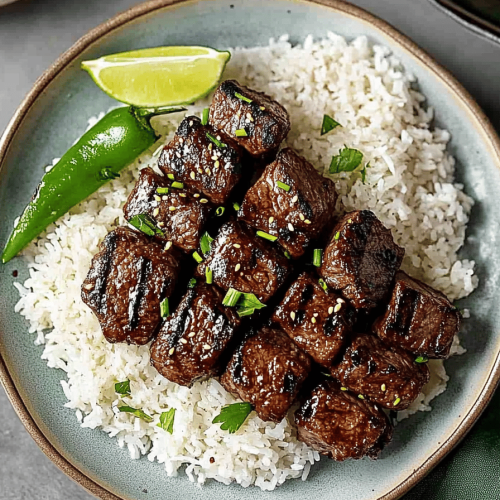Easy Beef Yakiniku Recipe

If you’re craving a savory dish with a rich, umami flavor, look no further than this delightful beef yakiniku recipe. Perfect for both novice cooks and seasoned chefs, this dish combines tender slices of beef with a savory-sweet glaze that’s sure to tantalize your taste buds. Whether you’re preparing a family dinner or impressing guests, this recipe is bound to become a favorite in your culinary repertoire.

Growing up, yakiniku nights were a cherished tradition in my family’s home. I remember the thrill of gathering around the dining table, the tempting aroma of grilling meat wafting through the house. My father would man the stovetop, lovingly cooking each slice to perfection while sharing stories from his childhood. Recreating this dish always brings back those fond memories, and I hope it does the same for you.
Why You’ll Love This Recipe
This beef yakiniku recipe stands out for several reasons. First, it’s incredibly versatile and can be tailored to suit your taste preferences. With a short prep time, it’s perfect for busy weeknights or impromptu dinner parties. The recipe uses readily available ingredients, ensuring you can enjoy this Japanese classic without a trip to a specialty store. Lastly, the balance of flavors—savory, sweet, and slightly smoky—creates an irresistible dish that even picky eaters will love.
Ingredients Notes
MORE EASY APPETIZERS RECIPES...
To achieve the best flavor, opt for high-quality beef such as ribeye or sirloin. When possible, look for meat with good marbling for extra tenderness. If you prefer a leaner cut, flank steak works well too. For the sauce, soy sauce and sake are must-haves, but mirin can be substituted with a mix of rice vinegar and sugar if needed. Fresh garlic and ginger add depth to the dish, so try to use fresh ingredients rather than powdered versions.
MORE OF OUR FAVORITE…

Recipe Steps
Step 1
Begin by slicing your beef into thin strips. This is easier if the beef is partially frozen, about 15 minutes in the freezer should suffice. Uniform slices ensure even cooking and tender bites.
Step 2
Prepare the marinade by combining soy sauce, sake, mirin, sugar, grated ginger, and minced garlic in a bowl. Whisk until the sugar dissolves completely.
Step 3
Marinate the beef in the sauce for at least 30 minutes. For deeper flavor, marinating for up to 2 hours in the refrigerator is recommended. Ensure that each piece is well-coated.
Step 4
Heat a grill pan or skillet over medium-high heat. Once hot, place the marinated beef slices in a single layer, cooking them for 1-2 minutes on each side until browned and cooked through.
Step 5
Remove the beef from the pan and let it rest briefly. Serve the meat immediately, garnished with sesame seeds and chopped green onions if desired.
Storage Options
Leftover beef yakiniku can be stored in the refrigerator in an airtight container for up to 3 days. To reheat, simply use a hot pan or microwave, taking care not to overcook the beef. For longer storage, freeze the cooked meat. Thaw it overnight in the fridge before reheating. The sauce can also be prepared ahead of time and stored for up to a week.
Variations & Substitutions
To cater to different dietary requirements, you can substitute chicken or tofu for the beef. For a spicy kick, add a teaspoon of chili paste to the marinade. Vegetarians can enjoy the sauce over a medley of grilled vegetables. Experiment with different flavor profiles by introducing ingredients like honey or a splash of sesame oil to the sauce for added complexity.
Serving Suggestions
Beef yakiniku is best served hot and fresh from the grill. Pair it with steamed rice or noodles and a side of pickled vegetables for a balanced meal. It also makes a great addition to a Japanese-themed dinner party, complemented by a platter of sushi or tempura. For a light lunch, serve the beef over a fresh salad with a ginger dressing.
Frequently Asked Questions
Can I prepare this dish ahead of time? Yes, you can marinate the beef up to a day in advance to enhance the flavors. Simply keep it covered in the refrigerator and cook when ready to serve.
What can I use instead of sake? If sake is unavailable, dry sherry or white wine can serve as a substitute in the marinade. Alternatively, you can omit it and increase the amount of soy sauce slightly for a non-alcoholic version.
How do I prevent the beef from becoming tough? The key to tender beef is not to overcook it. Cooking it quickly over high heat helps retain moisture and flavor. Cutting the beef against the grain also helps achieve a tender bite.

Recreate the magic of yakiniku nights in the comfort of your home with this easy and flavorful recipe. Perfectly suitable for a quick weeknight meal or a special occasion, it’s a dish that’s guaranteed to delight family and friends alike. Enjoy cooking this savory sensation!

Easy Beef Yakiniku Recipe
Ingredients
- For the Beef:
- 1 lb thinly sliced beef ribeye, sirloin, or chuck work well
- 1 tablespoon vegetable oil for cooking, if using a skillet
- For the Marinade / Yakiniku Sauce:
- ¼ cup 0.06 lbs soy sauce
- 2 tablespoons mirin
- 1 tablespoon sake or water if preferred
- 1 tablespoon brown sugar or honey
- 1 tablespoon sesame oil
- 2 cloves garlic minced
- 1 teaspoon fresh ginger grated
- ½ teaspoon chili flakes or a dash of sriracha optional
- 1 tablespoon toasted sesame seeds optional for garnish
- Chopped green onions for serving
Instructions
- Prepare the Sauce / Marinade:
- In a bowl, whisk together soy sauce, mirin, sake, brown sugar, sesame oil, garlic, ginger, and chili flakes if using.
- Marinate the Beef:
- Place thinly sliced beef in a bowl or zip-top bag.
- Pour about half of the sauce over the beef and marinate for 15–20 minutes. Reserve the rest of the sauce for cooking or drizzling.
- Cook the Beef:
- Heat a skillet or grill pan over medium-high heat with a touch of oil.
- Cook the beef in batches (don’t overcrowd the pan), searing for 1–2 minutes per side, or until caramelized and cooked through.
- Serve:
- Drizzle with remaining sauce and sprinkle with sesame seeds and chopped green onions.
- Serve over steamed rice, with shredded cabbage, kimchi, or wrapped in lettuce leaves.
Featured Comments
“Made this last night and it was so flavorful. Loved how the bite-sized came together.”
“This flavorful recipe was turned out amazing — the bite-sized really stands out. Thanks!”
“Super easy and family favorite! My family asked for seconds. Saving this one.”
“This shareable recipe was family favorite — the flavorful really stands out. Thanks!”
“Super easy and will make again! My family asked for seconds. Saving this one.”
“Made this last night and it was will make again. Loved how the bite-sized came together.”
“This flavorful recipe was so flavorful — the shareable really stands out. Thanks!”
“Made this last night and it was so flavorful. Loved how the crispy came together.”
“Super easy and turned out amazing! My family asked for seconds. Saving this one.”
“New favorite here — turned out amazing. flavorful was spot on.”











